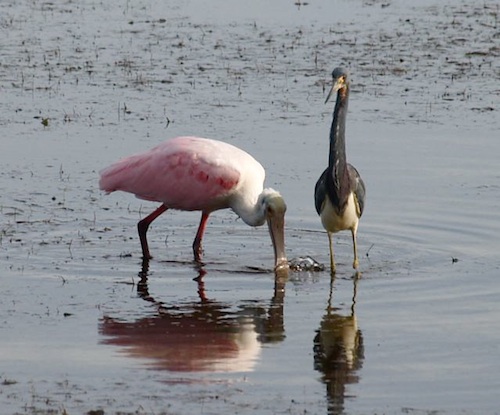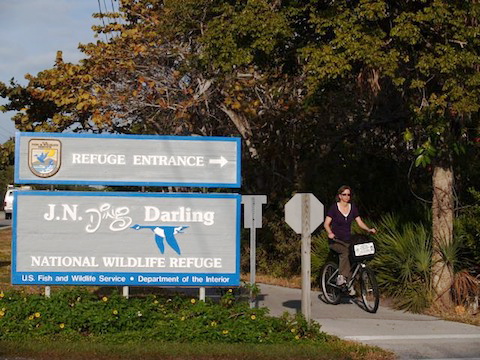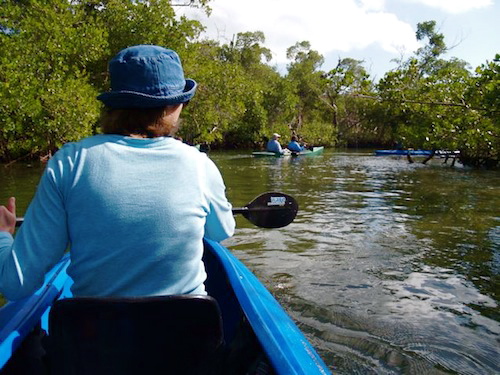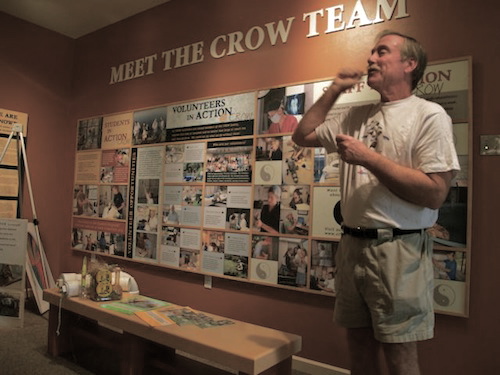
|
|
 |
||||||||||||||||||||
|
|
|||||||||||||||||||||
|
SANIBEL ISLAND Where the Sunshine State's Natural Side Is Found Text & Photos By Josephine Matyas  Think of Florida and you probably picture theme parks, mobile estates and shopping malls. Millions of acres in the Sunshine State have been plowed under and paved over in the name of entertainment (or “progress”), but private groups and government agencies are beginning to work together to restore fragile ecosystems – hopefully, before it’s too late. On Sanibel Island, a subtropical barrier island off the Gulf Coast, half of the land has been designated a National Wildlife Refuge created to protect the pristine habitat, guard endangered wildlife, and to provide feeding, nesting and roosting areas for more than 220 species of local and migratory birds. Think of Florida and you probably picture theme parks, mobile estates and shopping malls. Millions of acres in the Sunshine State have been plowed under and paved over in the name of entertainment (or “progress”), but private groups and government agencies are beginning to work together to restore fragile ecosystems – hopefully, before it’s too late. On Sanibel Island, a subtropical barrier island off the Gulf Coast, half of the land has been designated a National Wildlife Refuge created to protect the pristine habitat, guard endangered wildlife, and to provide feeding, nesting and roosting areas for more than 220 species of local and migratory birds.People have been coming to beautiful Sanibel for thousands of years: from the Calusa Indians, to European settlers, to the current wave of tourists. For everyone, it seems, is lured by the irresistible combination of sand, sea and tranquility. These days, tourism on Sanibel is encouragingly peppered with buzzwords like “conservation” and “sustainability,” and hunting and poaching have been replaced by nature photography and wildlife observation. Now that, is “progress”! The following places are worth taking the time to explore if you find yourself in need of a bit of Florida sunshine - without the theme park crowds. J.N. “Ding” Darling National Wildlife Refuge  It may be the beach that first draws visitors to Sanibel Island, but it’s “Ding” Darling that captivates their attention and brings them back year after year. World famous for its spectacular migratory bird populations, the 6,400-acre refuge is an undeveloped, protected ecosystem of mangrove forest, seagrass beds, marshes and West Indian hardwood hammocks. It’s a sanctuary for birds, sea life and wild animals. . . . exploring by land The refuge’s four-mile, one-way Wildlife Drive crosses through the heart of a forest of red and black mangrove. These “trees of the sea” grow in the intertidal environment and have adapted to survive exposure to the brackish water of estuaries. Florida’s mangroves are now protected – they provide an important safe home and nursery area for young fish, reptiles and mammals. You can explore the Wildlife Drive by four wheels (car or guided tram), two wheels (rent a bike) or on foot. Low tide is the best time to observe birds like roseate spoonbills, ibis and egrets as they are picking for small fish, crabs and shrimp in the exposed mud flats. Alligators, snakes, raccoons and marsh rabbits feed along the water’s edge. Travel tips:
. . . exploring by water According to kayak guide Barry Litofsky, “Over 800,000 people come to the refuge each year, but we have all sorts of ways to visit where we don’t disturb the wildlife.” For Litofsky, several hours of paddling along the kayak trail is the best way to spot birds like the anhinga, pelicans and snowy egrets, and the best chance to paddle beside playful dolphins and the occasional manatee.  From the put-in at Tarpon Bay, the Commodore Creek Water Trail twists and turns through a canopy of red mangroves, best identified by their arching stilt, “prop” roots. The guided tour of the fragile back bay ecosystem finishes at marker No. 11 in the middle of Mullet Lake – but you can stretch the afternoon with some exploring of your own as the kayaks are yours for the rest of the day. From the put-in at Tarpon Bay, the Commodore Creek Water Trail twists and turns through a canopy of red mangroves, best identified by their arching stilt, “prop” roots. The guided tour of the fragile back bay ecosystem finishes at marker No. 11 in the middle of Mullet Lake – but you can stretch the afternoon with some exploring of your own as the kayaks are yours for the rest of the day.Travel tips:
Clinic for the Rehabilitation of Wildlife (C.R.O.W.)  The work of one of the nation’s leading wildlife rehabilitation hospitals began over 40 years ago with the rescue and nursing of one injured royal tern. Now, the C.R.O.W. staff treats more than 4,000 patients each year (the majority are birds, but patients include tortoises, reptiles, sea turtles, otters, opossums and raccoons). Twice each day, trained C.R.O.W. volunteers drive the circuit to nine, local veterinary hospitals – each having been designated a safe drop-off location for injured or sick wildlife. They then deliver their precious cargo to C.R.O.W., where wildlife-trained veterinarians assess the new patients and decide on a method of treatment that could be a combination of Western practices and Qi Chinese medicine. The actual hospital facility is closed to the public (nothing would stress the recovering wildlife patients more than a parade of tourists passing through), but visitors can watch recovery areas by web cam from the Visitor Education Center. The new 4,800-square-foot building is filled with displays to explain the different stages of the rehabilitative process: you can “play the vet” with an interactive computer program, study alternative medicine approaches, and learn about the threats to habitat and safety of the wildlife. Travel tips:
FAST FACTS Lee County Visitors & Convention Bureau 12800 University Drive, #550 Fort Myers, FL 33907 (800) 237-6444; (239) 338-3500 www.fortmyerssanibel.com J.N. “Ding” Darling National Wildlife Refuge 1 Wildlife Drive Sanibel Island, FL 33957 (239) 472-1100 www.fws.gov/dingdarling Tarpon Bay Explorers 900 Tarpon Bay Rd. Sanibel Island, FL 33957 (239) 472-8900 www.tarponbayexplorers.com Casa Ybel Resort 2255 W. Gulf Rd. Sanibel Island, FL 33957 (239) 276-4753 www.casaybelresort.com Amy’s Over Easy Cafe 630 Tarpon Bay Rd. Sanibel Island, FL 33957 (239) 472-2625 www.overeasycafesanibel.com C.R.O.W. Rehabilitative Center (239) 472-3644 www.crowclinic.org Josephine Matyas is a travel writer based in Ontario, Canada. Find her online at www.writerwithoutborders.com. |
|
|
|
|
| Site Map |